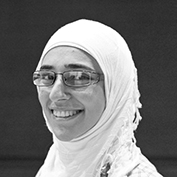Where Do Arabs Fit In?
Sara Suwan | November 20, 2013.
“Arabs – Time to lead”, was the slogan emblazoned on my black t-shirt during my participation at COP18 last year in Doha as a youth delegate from the Arab Youth Climate Movement (AYCM). This was our call for the Arab world to take climate change seriously, and to push our own leaders to develop and communicate a comprehensive low carbon development strategy. Sadly little happened in Doha, and the true test is now how to keep pushing Arab governments for voluntary commitment. Considering the first week of climate negotiations in Warsaw are now over, we could infer that the Arab stance will not change.
Some of the Arab League representatives were “cooperative” and some were “less cooperative” . Various Arab governments respond differently to civil society and their engagement, so the method of lobbying differs from country to country too. What appears to be effective in Lebanon, for instance, is pressuring the government does not necessarily work in Bahrain.
Arab civil society has been “less aggressive” compared to last year; they are now looking for avenues to collaborate. They further “need to put a lot of pressure for [Arab governments] to bring new pledges to the Ban Ki-Moon summit next September,” Wael Hmaidan from Climate Action Network explained.
Arab Civil Society has many challenges in addressing climate change in the Middle East and North Africa (MENA), a region that is considered one of the weakest in climate change advocacy and awareness.
How do you expect people who live in places of constant conflict like Damascus or Gaza or Tahrir Square to even begin thinking about Climate Change? And how do you expect countries like Saudi Arabia or Qatar whose economy depends on gas and oil to make an effort to shift from fossil fuels?
Combating climate change is certainly not high on their political agenda. Most Arab governments perceive action on climate change to be against their interests, as it is against their priority of keeping the world addicted resources that they are abundant in. The lack of democratic regimes or even political stability in the region, aided in the absence of civil society demanding increase consideration for this global problem makes it even harder to put climate change high on the agenda.
How should things proceed after this COP? Lama El Hatow from Heinrich Böll Stiftung put it this way: “we need to understand how best to work domestically on climate change and [raise the] awareness of people within the region with respect to consumption patterns, and sustainable development.”
El Hatow continued, “this is the best time to allow the environmental and climate movement to come to the forefront of the agenda and priorities to strategise how best to plan for the future generations,” referring to the Arab spring and countries in transition.
Although the challenges in MENA are tremendous, the opportunities to improve the lives of future generations are exciting. They deserve to live in resilient communities.
By Sara Suwan, photo by Laura Owsianka.










comment